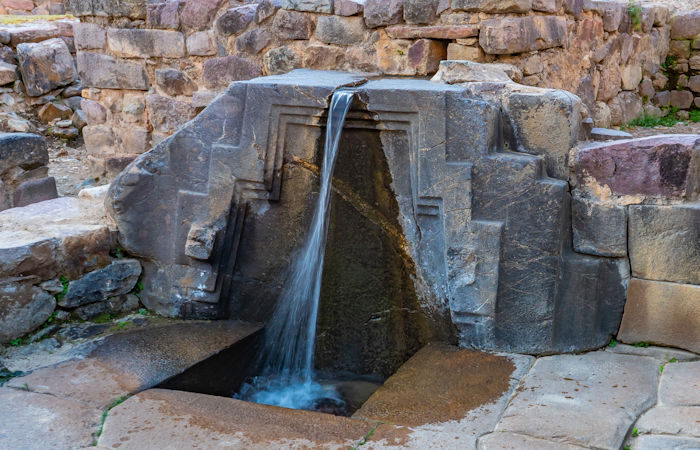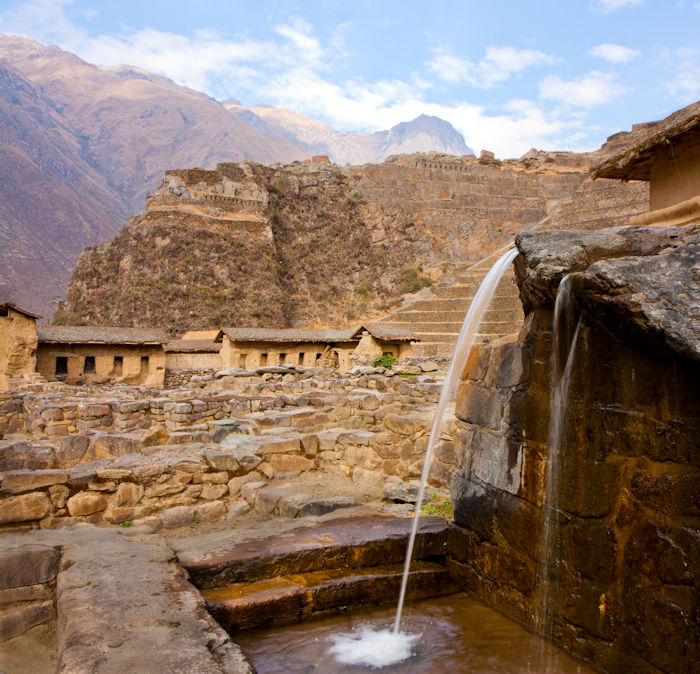Incamisana Water Temple At Ollantaytambo, Peru: Marvelous Engineering Masterpiece Of Inca
A. Sutherland - AncientPages.com - The Incas were known for their engineering practices, particularly water engineering. Their design of water systems was influenced by their strong beliefs in power of water.
One of many fountains of the Incamisana Water Temple. The fountain called Baño de la Ñusta (Bath of the Princess Fountain) is composed of a stream of water flowing in a single block of stone, and continues over the Inca's sacred stepped chakana symbol, and then, down into a small pool. Credit: Adobe Stock - videobuzzing
They saw water as both a physical and spiritual phenomenon. They considered their great civilization as something that arises from water.
The Incamisana temple at Ollantaytambo in Peru was constructed for the worship of deities who gave the Inca people water and water itself. Even today, in our modern terms, the structure represents the Inca's masterpiece of both civil engineering and construction. It was designed to focus on religious ceremonies and offerings.
It's definitely a truly remarkable achievement, especially if we consider the region's harsh weather and the altitude of 2,792 m (9,160 ft) above sea level.
Flooding that took place in 1679 damaged the temple, but the deposit of sediment, fortunately, preserved the lower portion of it.
The Patacancha Valley is divided into four main basins (the Yuracmayo, San Pablo, Paq'chapata, and Puma Paqcha (or Media Luna). Through these basins, the Inca engineers were able to redesign a canal system extending it for several kilometers.
Many of the channels in the system were originally built by the settlers of Killke (Quillke), pre-Inca culture (900 to 1200 AD). These people occupied the South American region around Cusco, Peru, before the arrival of the Incas in the 13th century. The channels were used mainly as irrigation for the hundreds of terraces scattered across the valley.
Dr. Richard Miksad studied the water sources of Incamisana in Ollantaytambo and led the team of researchers from the University of Virginia, Wright Water Engineers, Wright Paleohydrological Institute, and archaeologists Arminda Gibaja Oviedo and Dr. Gordon McEwan, who conducted reverse engineering field research at the site.
The Incamisana is located north of the Manyaraki canal, in the Sacred Valley of the Incas at almost an altitude of 3,000 meters and approximately 70 kilometers northwest of Cusco. This sophisticated water complex consists of rooms, open spaces, a beautiful complex of pools, ornamental fountains, waterfalls, and buried channels.
The Incas had advanced the understanding of modern hydraulic principles. They were able to design the channels to avoid the so-called hydraulic jumps, or used them if necessary. This was especially difficult since the flow rates occur in different amounts in rainy seasons.
Incamisana, Ollantaytambo, Peru. Credit: Adobe Stock - kcullen
The Incas were also able to develop successful construction methods. For example, impermeable rock coating was used to prevent water from leaking out of the channels. To protect against landslides and erosion of multi-level terraces foundations are connected to drainage channels.
Fourteen Ceremonial Fountains
The excavated temple has fourteen ceremonial fountains and additionally, three others that were never completed, and then the place was abandoned. There are also canals and a well-planned and meticulously engineered conduit/distribution water system.
The Incamisana has platforms and elaborately carved stone niches; channels and fountains are moving water through the temple. The Incamisana played an important role, but in the design of these Inca watery systems, the ruler, as the most important official, would have access to freshwater before other people used it.
The network of roads, carefully planned, engineered, built, and maintained, connected the Incamisama sanctuary with the Inca Empire.
Updated on October 11, 2023
Written by – A. Sutherland - AncientPages.com Senior Staff Writer
Copyright © AncientPages.com All rights reserved. This material may not be published, broadcast, rewritten or redistributed in whole or part without the express written permission of AncientPages.com
Expand for referencesMore From Ancient Pages
-
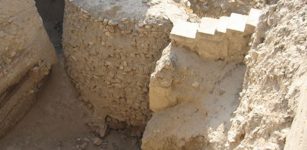 Mysterious 11,000 – Year-Old Tower Of Jericho: Was World’s First Skycraper A Symbol Of Power Or An Ancient Time-Keeping Device?
Civilizations | Aug 11, 2021
Mysterious 11,000 – Year-Old Tower Of Jericho: Was World’s First Skycraper A Symbol Of Power Or An Ancient Time-Keeping Device?
Civilizations | Aug 11, 2021 -
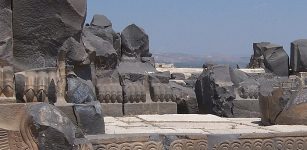 Unsolved Mystery Of The Giant Footprints Outside The Ain Dara Temple
Featured Stories | Jun 7, 2014
Unsolved Mystery Of The Giant Footprints Outside The Ain Dara Temple
Featured Stories | Jun 7, 2014 -
 On This Day In History: Battle Of San Domingo Was Fought – On February 6, 1806
News | Feb 6, 2017
On This Day In History: Battle Of San Domingo Was Fought – On February 6, 1806
News | Feb 6, 2017 -
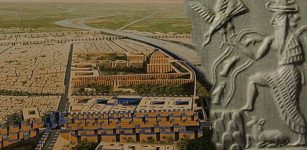 Eridu: Pre-Flood City That Belonged To Enki, God Of Creation, Intelligence, Wisdom And Magic
Civilizations | Mar 27, 2017
Eridu: Pre-Flood City That Belonged To Enki, God Of Creation, Intelligence, Wisdom And Magic
Civilizations | Mar 27, 2017 -
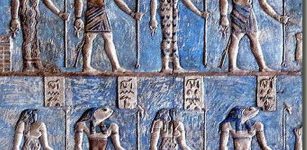 Number Eight Powerful Symbol In Ancient Traditions Of Many Cultures
Ancient Symbols | Dec 8, 2017
Number Eight Powerful Symbol In Ancient Traditions Of Many Cultures
Ancient Symbols | Dec 8, 2017 -
 On This Day In History: Isaac Asimov Creator Of Science Fiction Was Born – On Jan 2, 1920
News | Jan 2, 2017
On This Day In History: Isaac Asimov Creator Of Science Fiction Was Born – On Jan 2, 1920
News | Jan 2, 2017 -
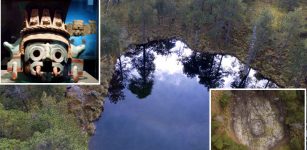 Tetzacualco – Mesoamerican Mini Model Of The Universe Discovered Underwater
Archaeology | Jan 4, 2018
Tetzacualco – Mesoamerican Mini Model Of The Universe Discovered Underwater
Archaeology | Jan 4, 2018 -
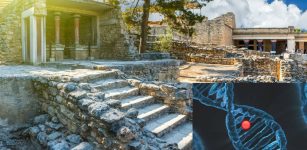 Ancient DNA Sheds New Light On The Fall Of Major Civilizations
Archaeology | Aug 9, 2022
Ancient DNA Sheds New Light On The Fall Of Major Civilizations
Archaeology | Aug 9, 2022 -
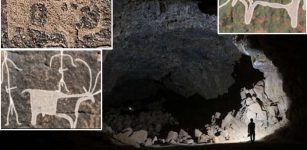 Human Occupation In Lava Tube Cave In Saudi Arabia – First Evidence Discovered
Archaeology | Apr 18, 2024
Human Occupation In Lava Tube Cave In Saudi Arabia – First Evidence Discovered
Archaeology | Apr 18, 2024 -
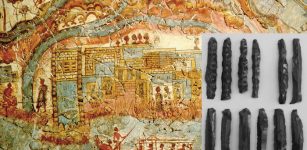 Analysis Of Ancient Tools Challenges Long-Held Ideas About What Drove Major Changes In Ancient Greek Society
Archaeology | Aug 23, 2022
Analysis Of Ancient Tools Challenges Long-Held Ideas About What Drove Major Changes In Ancient Greek Society
Archaeology | Aug 23, 2022 -
 New Clues To Behavior Of Neanderthal Hunting Parties
Archaeology | Mar 27, 2023
New Clues To Behavior Of Neanderthal Hunting Parties
Archaeology | Mar 27, 2023 -
 Pharaoh Hor Aha – 1st Dynasty Ruler Of Ancient Egypt Who Founded The City Of Memphis And May Have Been The Legendary Menes
Featured Stories | Jun 23, 2018
Pharaoh Hor Aha – 1st Dynasty Ruler Of Ancient Egypt Who Founded The City Of Memphis And May Have Been The Legendary Menes
Featured Stories | Jun 23, 2018 -
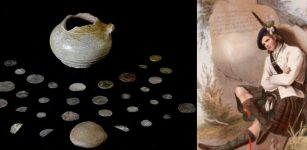 Coin Hoard Paints A Fascinating Picture Of Life Of Highland Clan Chief And His Household
Archaeology | Oct 13, 2023
Coin Hoard Paints A Fascinating Picture Of Life Of Highland Clan Chief And His Household
Archaeology | Oct 13, 2023 -
 On This Day In History: Knights Templar Arrested In The Kingdom Of France – Oct 13, 1307
News | Oct 13, 2016
On This Day In History: Knights Templar Arrested In The Kingdom Of France – Oct 13, 1307
News | Oct 13, 2016 -
 Ancient Oil Lamp Shop Discovered In Aizanoi, The Second Ephesus
Archaeology | Nov 22, 2021
Ancient Oil Lamp Shop Discovered In Aizanoi, The Second Ephesus
Archaeology | Nov 22, 2021 -
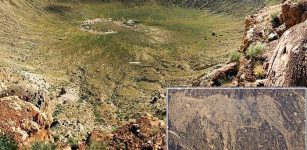 8,000-Year-Old Petroglyphs Discovered In Oldest Impact Crater In South Africa
Archaeology | Jun 21, 2019
8,000-Year-Old Petroglyphs Discovered In Oldest Impact Crater In South Africa
Archaeology | Jun 21, 2019 -
 Vikings Feared Climate Change 1,200 Years Ago – Famous Rök Stone Reveals
Archaeology | Jan 10, 2020
Vikings Feared Climate Change 1,200 Years Ago – Famous Rök Stone Reveals
Archaeology | Jan 10, 2020 -
 Kali – Hindu Goddess Of Death, Fear And Horror Who Destroys Ignorance, Evil And Establishes World Order
Featured Stories | Sep 28, 2021
Kali – Hindu Goddess Of Death, Fear And Horror Who Destroys Ignorance, Evil And Establishes World Order
Featured Stories | Sep 28, 2021 -
 Hot-Tempered Shield Maiden Freydis Eiriksdottir’s Unusual Adventures In Vinland And Greenland – Trouble Followed in Her Footsteps
Featured Stories | Apr 3, 2025
Hot-Tempered Shield Maiden Freydis Eiriksdottir’s Unusual Adventures In Vinland And Greenland – Trouble Followed in Her Footsteps
Featured Stories | Apr 3, 2025 -
 Nefertum – God Of Lotus Blossom, Perfumes, Aromatherapy, Beauty In Egyptian Mythology
Featured Stories | Apr 17, 2021
Nefertum – God Of Lotus Blossom, Perfumes, Aromatherapy, Beauty In Egyptian Mythology
Featured Stories | Apr 17, 2021

